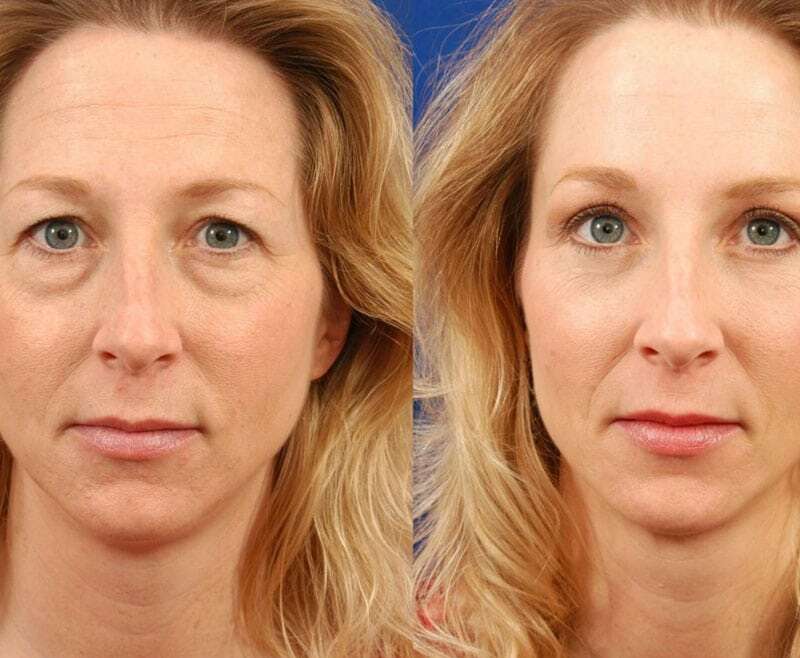Eyelid Surgery
Skin around the eyes is very sensitive to touch. As time progresses, age takes its toll on most people’s eyelids, causing sagging, drooping, fat deposits around the eyes, bags, bulges, dark circles, fine lines and wrinkles, some of which can impede vision. Occasionally, some of these conditions may be caused by medical conditions, such as thyroid disease. Eyelid surgery, alone or in conjunction with a forehead/brow lift or face lift, can restore a more youthful appearance.
Procedure
Eyelid surgery is conducted on an outpatient basis, usually with a combination of local anesthesia and sedation. Both the upper and lower lids are treated in the surgery. The surgeon marks the natural lines and creases on each eyelid to make use of these folds to hide any scars. For lower lids, an incision is often made along the lash line to conceal the scar. After making an incision, excess fat, muscle and skin is trimmed and the incision is closed with fine sutures. The surgery generally lasts between 1 and 3 hours.
Recovery
The doctor may or may not apply a dressing to the eyes after surgery. An ointment is often used to prevent eye dryness, which may cause some blurriness of vision. Expect some swelling and bruising on and around the eyes. Cold compresses can help reduce the swelling in addition to any pain medication your doctor may prescribe. It is important to keep your head elevated when lying down during recovery. Your doctor will likely instruct you to cleanse your eyes daily with eye drops.
Immediately after the surgery, light sensitivity, excessive tearing and double vision may occur. These symptoms will pass in a matter of days. Puffy eyelids and numbness are more likely to last a few weeks longer. Permanent stitches are removed in 3 to 5 days. Generally, patients return to most normal activity within a week, although heavy lifting, bending at the waist, swimming, extreme neck movements and strenuous activity may be restricted for some additional weeks.


